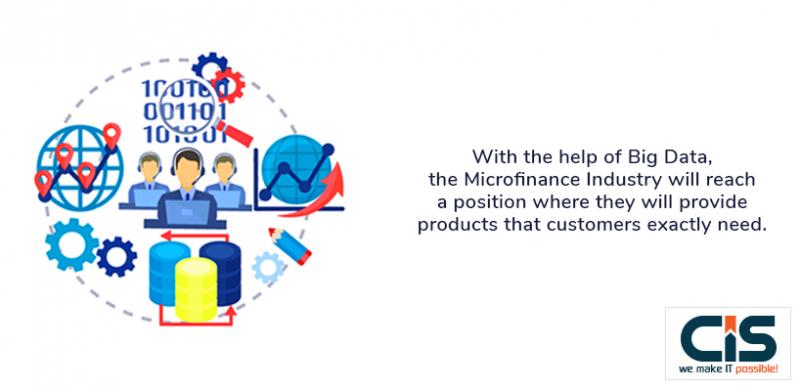With the help of Big Data, the Microfinance Industry will reach a position where they will have the ability to provide products that customers exactly need
With technological advancement, along with rising mobile phone penetration, the introduction of new players, as well as humungous investments in the finance-related technical domain, are certainly transforming the entire landscape of financial services.
However, the major question is particular how the big data technology can allow microfinance institutions to play quite a disruptive and innovative role in the entirely new ecosystem along with meeting the increasing and evolving customer expectations and demands, by full incorporation of digitization as well as partnering with the different stakeholders in the entire ecosystem. Product development services are now venturing into this domain rapidly. But will big data help the microfinance industry to reach a position where they will have the inherent ability to offer products which the customers exactly require? Let’s pursue this issue and find the answer.
Emergence of Microfinance and the Importance of Granular Data
Among the best things about microfinance is the huge volume of granular data being available, considering hundreds of millions of customer accounts spread all over the world. Also, this particular data is certainly quite rich, which covers ages, occupation, gender, income estimates, attendance at meeting centres, repayment patterns and much more. With most of the credit institutions operation with the assistance of IT-enabled money lending platforms, there are four key aspects which emerge that Big Data development services should know:
Credit Decisions based on Data and Risk
It can easily be utilized to effectively develop certain application scorecards for much more efficient and effective as well as an unbiased selection of the customers when it comes to funding. Major key information, as well as customer behaviour patterns obtained from the industry data, can easily be formulated into such types of scorecards. Also, right at the frontend, these credit decisions are duly available via digital channels of various handheld mobile devices of the respective customer service office, within a few seconds.
Hence, they can easily execute the entire role of fulfilment executive that spends most of the effective time verification along with validation as well as reference checks. Hence, automatic big-data analysed, algorithm-based process of the customer loan request, along with approval as well as a disbursement by means of crediting to the customer’s account within few seconds, is what most likely to happen. Big data cloud solutions will serve the purpose to store this high volume of data for proper analysis.
Financial Product Development and Selection
Churning big data right at the backend, utilizing cutting edge intuitive statistical models as well as for analytics along with artificial intelligence as well as machine learning can easily be harnessed effectively to service the customers having financial needs, with simply the correct loan ticket size as well as repayment frequencies. Also, it even allows one to easily gaze into the future in the prediction of the portfolio behaviours at different geographies as well as segments. Hence, it predicts likely defaults or even the credit losses much more accurately. It will enable right risk pricing of the different loans offered, hence charging particularly optimized interest rates to the certain customers, within the norms of international regulatory standards which are being mandated by both central banks as well as regulators all over the world. We will witness the SaaS product development of such financial solutions.
Positioning of Financial Service or Product
In the upcoming times, via big data, the entire industry will certainly be in a particular position to provide products which the customers require instead of the products which are designed internally. It would certainly assist in cross-selling of different financial inclusion products, as well as services like pensions, bank accounts, insurance, remittances and investments etc., by means of indicating the requirements of the customer-generated via analytics which inculcate data modelling, price modelling and customer segmentation.
Rise of e-payments and M-commerce
Through the assistance of big-data, the m-commerce will easily allow the customers to choose any particular service on credit by actually enabling a robust loan approval mechanism via analytics. Even big data will assist in providing payment options. With a billion transactions estimated to happen every year in this particular sector, that can be e-enabled in order to benefit the customers and also bring the entire operating expenses significantly down.
Conclusion
Big data enables working smarter, not harder. Different data, both structured as well as unstructured that is available is directly into the entire network to analyse as well as response much more effectively and even quite quickly to different problem statements. Even, big data coupled with the different facets of AI have certainly started to bring changes to the way different decisions are taken. While it is quite important to understand the overall relevance of analysing the correct data, eliminating the garbage is also crucial. Hence, with the assistance of Big Data, the entire microfinance industry will certainly reach a great position where it will provide the customers with the products that they require.
